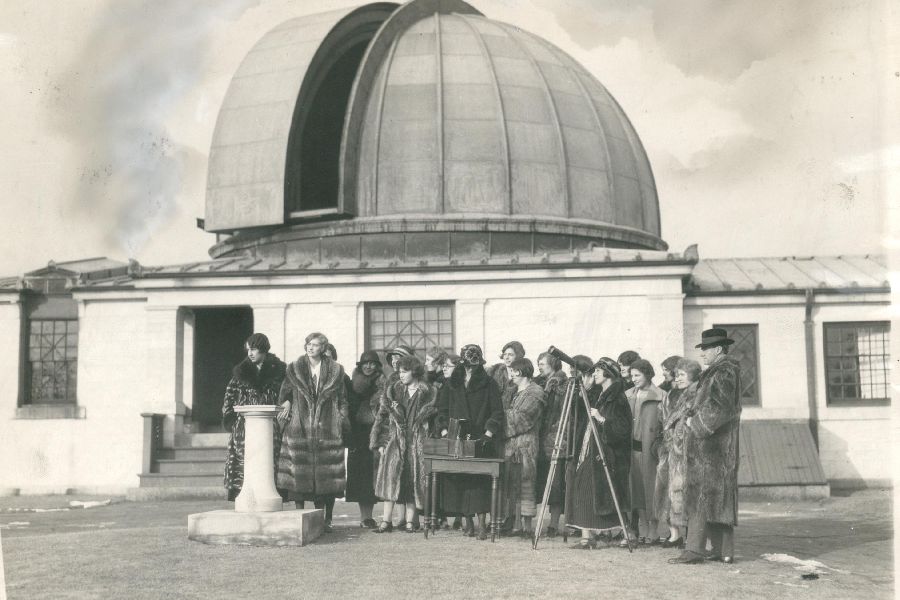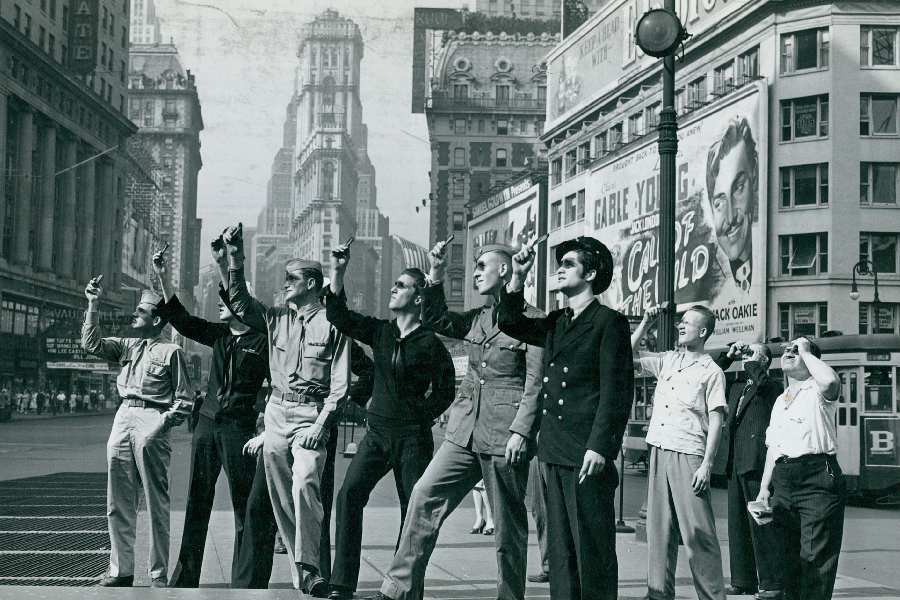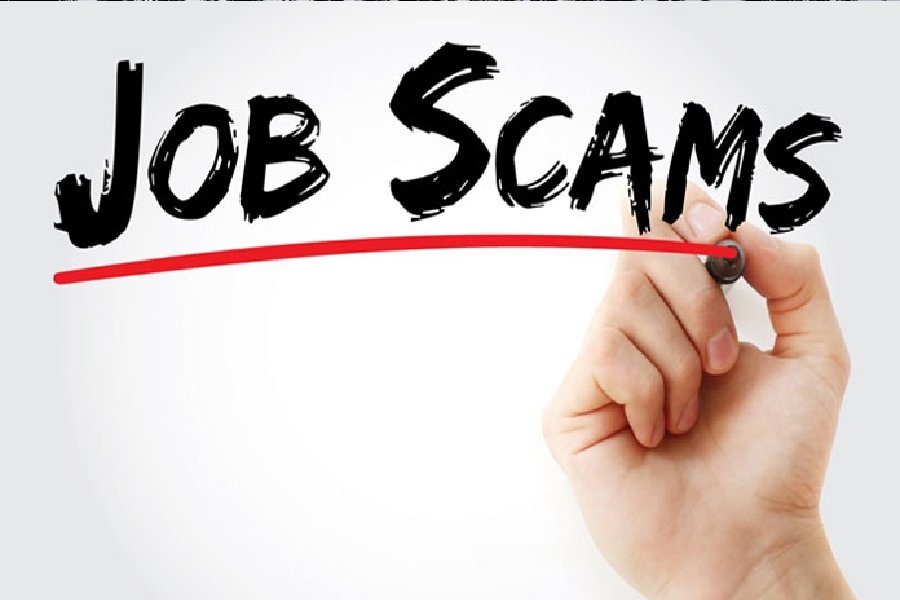For centuries, people have been clamouring to glimpse solar eclipses. From astronomers with custom-built photographic equipment to groups huddled together with special glasses, this spectacle has captivated the human imagination.
Creating a Permanent Record
In 1860, Warren de la Rue captured what many sources describe as the first photograph of a total solar eclipse. He took it in Rivabellosa, Spain, with an instrument known as the Kew Photoheliograph. This combination of a telescope and camera was specifically built to photograph the sun.
Forty years later, Nevil Maskelyne, a magician and an astronomy enthusiast, filmed a total solar eclipse in North Carolina.

Women from Wellesley College in Massachusetts and their professor test out equipment ahead of their eclipse trip (to “catch old Sol in the act,” as the original New York Times article phrased it) to New London, Conn., in 1922. For centuries, people have been clamoring to glimpse solar eclipses. The New York Times
The footage was lost, however, and only released in 2019 after it was rediscovered in the Royal Astronomical Society’s archives.
Telescopic Vision
For scientists and astronomers, eclipses provide not only an opportunity to view the moon’s umbra and gaze at the sun’s corona, but also to make observations that further their studies. Many observatories, or friendly neighbours with a telescope, also make their instruments available to the public during eclipses.
Students from Wellesley College in Massachusetts and their professor tested out equipment before their eclipse trip (to “catch old Sol in the act,” as the original New York Times article phrased it) to New London, Connecticut, in 1922.

FILE — A group from Swarthmore College in Pennsylvania traveled to Yerbaniz, Mexico, in 1923, with telescopes and a 65-foot camera to observe the sun’s corona. For centuries, people have been clamoring to glimpse solar eclipses. The New York Times
Indirect Light
If you see people Monday sprinting to your local park clutching pieces of paper, or with a cardboard box on their head, they are probably planning to reflect or project images of the solar eclipse onto a surface.
A popular option is to create a pinhole camera.
In New York City’s Central Park, in 1970, Irving Schwartz and his wife reflected an eclipse onto a piece of paper by holding binoculars on the edge of a garbage basket.

FILE — Dr. J.J. Nassau, director of the Warner and Swasey Observatory at Case School of Applied Science in Cleveland, prepares to head to Douglas Hill, Maine, to study an eclipse in 1932. An entire freight car was required to transport the institution’s equipment. The New York Times
Children in Denver in 1979 used cardboard viewing boxes and pieces of paper with small pinholes to view projections of a partial eclipse.
Staring at the Sun (or, How Not to Burn Your Retinas)
Eclipse-gazers have used different methods to protect their eyes throughout the years, some safer than others.
In 1927, women gathered at a window in a building in London to watch a total eclipse through smoked glass. This was popularized in France in the 1700s, but fell out of favor when physicians began writing papers on children whose vision was damaged.

FILE — A woman uses a paper cup with a small hole in the bottom and a twin-lens reflex camera to view a solar eclipse in Central Park in New York in 1963. For centuries, people have been clamoring to glimpse solar eclipses. John Orris/The New York Times
Another trend was to use a strip of exposed photographic film. This method, which was even suggested by the Times in 1979, has since been declared unsafe.
Solar eclipse glasses are a popular and safe way to view the event (if you use models compliant with international safety standards). Over the years there have been various styles.
The New York Times News Service










